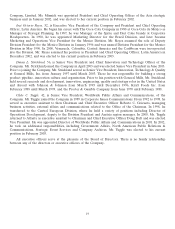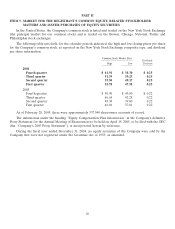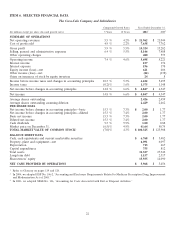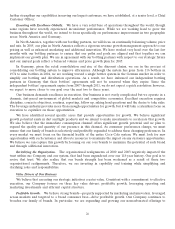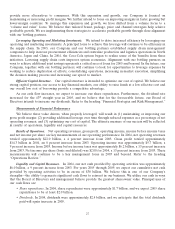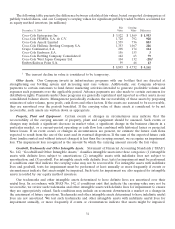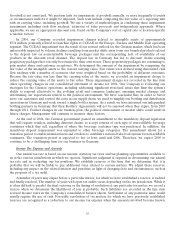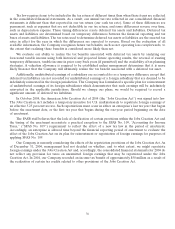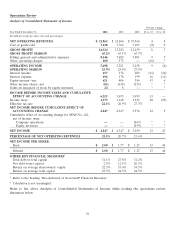Coca Cola 2004 Annual Report Download - page 31
Download and view the complete annual report
Please find page 31 of the 2004 Coca Cola annual report below. You can navigate through the pages in the report by either clicking on the pages listed below, or by using the keyword search tool below to find specific information within the annual report.
Financial Strategies and Risk Management
The following strategies are intended to optimize our cost of capital. We consider these strategies to be of
critical importance in pursuing our goal of maximizing shareowner value.
Debt Financing
Our Company maintains debt levels we consider prudent based on our cash flow, interest coverage ratio
and percentage of debt to capital. We use debt financing to lower our overall cost of capital, which increases our
return on shareowners’ equity.
As of December 31, 2004, our long-term debt was rated ‘‘A+’’ by Standard & Poor’s and ‘‘Aa3’’ by Moody’s,
and our commercial paper program was rated ‘‘A-1’’ and ‘‘P-1’’ by Standard & Poor’s and Moody’s, respectively.
In assessing our credit strength, both Standard & Poor’s and Moody’s consider our capital structure and
financial policies as well as aggregated balance sheet and other financial information for the Company and
certain bottlers, including CCE and Coca-Cola HBC. While the Company has no legal obligation for the debt of
these bottlers, the rating agencies believe the strategic importance of the bottlers to the Company’s business
model provides the Company with an incentive to keep these bottlers viable. If our credit ratings were reduced
by the rating agencies, our interest expense could increase. Additionally, if certain bottlers’ credit ratings were to
decline, the Company’s share of equity income could be reduced as a result of the potential increase in interest
expense for these bottlers.
The rating agencies monitor our interest coverage ratio. Rating agencies often exclude unusual items from
the calculation; however, we calculated our ratio based on our reported results. Generally, this ratio is computed
as income before taxes plus interest expense and capitalized interest divided by the sum of interest expense and
capitalized interest. Our interest coverage ratios were 33x, 32x and 28x, respectively, for the years ended
December 31, 2004, 2003 and 2002. Refer to the heading ‘‘Reconciliation of Non-GAAP Financial Measures.’’
We monitor our interest coverage ratio and, as previously indicated, the rating agencies consider our ratio
in assessing our credit ratings. However, as described above, the rating agencies aggregate financial data for
certain bottlers with our Company when assessing our debt rating. As such, the key measure to rating agencies is
the aggregate interest coverage ratio of the Company and certain bottlers. Both Standard & Poor’s and Moody’s
employ different aggregation methodologies and have different thresholds for the aggregate interest coverage
ratio. These thresholds are not necessarily permanent nor are they fully disclosed to our Company.
Our global presence and strong capital position give us access to key financial markets around the world,
enabling us to raise funds with a low effective cost. This posture, coupled with active management of our mix of
short-term and long-term debt, results in a lower overall cost of borrowing. Our debt management policies, in
conjunction with our share repurchase programs and investment activity, can result in current liabilities
exceeding current assets.
In managing our use of debt, we also monitor the following financial measures:
December 31, 2004 2003 2002
Net debt (in billions)1$ 0.4 $ 1.9 $ 3.0
Net debt-to-net capital12.5% 12.1% 20.3%
Ratio of earnings to fixed charges 25.8x 24.6x 23.2x
1Refer to the heading ‘‘Reconciliation of Non-GAAP Financial Measures.’’
Our Company monitors the financial measures discussed above in conjunction with our mix of fixed-rate
and variable-rate debt and other business and financial risks. The above financial measures trended positively in
2004 and 2003, reflecting improved business results and effective capital management strategies.
29


